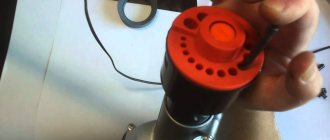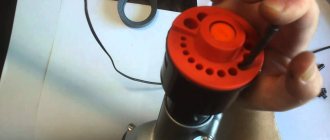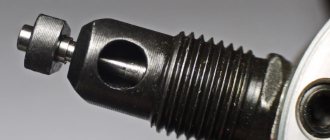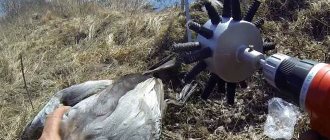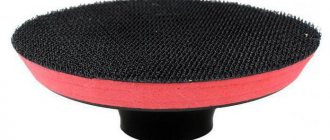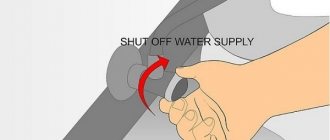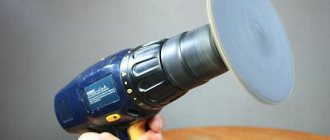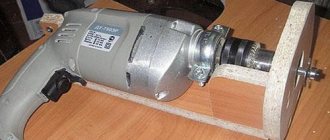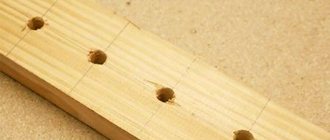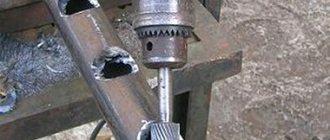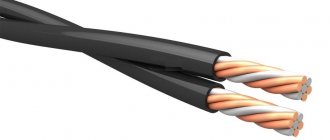Device for grinding valves on a drill
An operation such as valve grinding is included in the list of works for engine overhaul.
It is aimed at ensuring that the valve plate fits as tightly as possible to the seat, thereby minimizing the possibility of fuel leaking into the cylinders or exhaust gas breakthrough. After long-term use of the vehicle, carbon deposits on the surfaces of the valve and seat chamfers, microcracks and scuffs appear.
As a result, the contact patch between the surfaces decreases, the valve does not fit tightly to the seat, which is why it begins to leak and the engine’s compression decreases.
To remove carbon deposits, shells, and scuffs, valve lapping is used, as a result of which the contact patch between the valve and the seat is restored.
In addition to performing this operation as part of a major overhaul, valve grinding is carried out in a number of cases.
So, these works are carried out:
- If the valve or seat burns;
- When the valve disc burns out;
- When replacing them in case of damage, in general, whenever problems arise with these elements.
Required valve lapping tool
The work of grinding valves is not particularly difficult, but it takes a long time to complete, especially if you do it yourself.
It is impossible to perform them on a car; you will have to partially disassemble the power plant, namely remove the cylinder head.
Therefore, when deciding to grind the valves, you should immediately take care of having a new cylinder head gasket.
The tools you will need to perform this operation are:
- Set of keys and sockets;
- Device for desiccation of valves;
- Device for performing grinding;
- Grinding pastes;
- Rags;
- Kerosene.
Tools for performing work, lapping pastes
Let's go through the valve accessories.
There are special tools for removing the crackers that hold the valve head in the seat plate.
There are many designs, we won’t describe them all. Let us only note that they all operate on the same principle.
With this device, the valve springs are compressed, the valve mounting plate moves down, releasing the crackers, and they are removed.
But you can do it in a simple way. You will need a piece of tube with a diameter slightly smaller than the mounting plate.
This tube is placed on a plate and hit sharply with a hammer. Due to the impact, the springs are compressed, the plate sags and the crackers jump out.
In this case, it is better to cover the hole on the side on which the blow will be struck with something so that the crackers do not fly out through it.
Now about the lapping device.
It can be purchased, usually such a device consists of a nut clamp, a rod and a wrench.
But you can do it yourself. To do this, you will need a rod with a diameter equal to the diameter of the valve. A knob is welded to it to form a T-shaped structure.
On the other side of the knob, a piece of rubber tube is placed on the rod.
1 – metal rod with a diameter of 5 – 8 mm, depending on the diameter of the valve stem, 2 – rubber tube, 3 – clamp clamps.
The inner diameter of the tube must be chosen so that it fits tightly onto the rod.
You will also need another clamp; it will clamp the edge of the rubber tube, which will be placed on the valve stem.
To grind valves with your own hands, tools alone are not enough, since this operation is performed using special pastes.
They are not difficult to find; you can buy both cheap lapping pastes and very expensive ones.
For lapping, it is better to purchase kits consisting of two pastes or just two pastes - for primary roughing and for secondary finishing.
You may also need to use a cutter. It is a conical head for a drill with metal cutters inserted into it.
Use it to treat the damaged surface of the saddle.
Valve lapping process
First, remove the head from the engine. Next, the camshaft, adjusting washers or hydraulic compensators are removed from the head.
The next step is desiccation of the valves. To do this, either a device is used, or they are knocked out with a spacer.
After this, the mounting plates and springs are removed. The valve itself is removed from the head to assess its condition and the condition of the seat.
If it has no signs of burning and its rod is not bent, then it is not necessary to change it; it will be suitable for further use.
The saddle also needs to be inspected for signs of burning. If there are traces of burning of the seat, its surface is first treated with a rolling cutter.
After making sure that there is no burning on the surfaces, the grinding process begins.
To do this, apply a little initial processing paste to the valve chamfer.
Next, it is put in place, and a lapping device is put on its rod. If it is homemade, then the rubber tube on the rod must be clamped with a clamp.
Then the valve is pressed against the seat using the device and grinding begins.
To do this, turn the valve 180 degrees using the knob, and then turn it in the opposite direction. These movements are used to perform grinding.
It takes approximately 5-7 minutes to treat the surface with one type of paste. time.
The valve position changes periodically. That is, it needs to be turned approximately 90 degrees. from the extreme position when grinding in, after which the process continues again with turning it 180 degrees. and return back.
It is not advisable to mechanize the process by using a drill with an attachment on the valve stem.
Drills usually have high speeds, so when grinding with them there is a possibility of overheating the valve seat and chamfer.
In this case, a screwdriver is better. But the circular motion that will be provided by a drill or screwdriver is not recommended during lapping; this operation is best performed by half-turning the valve and then turning it in the opposite direction, that is, manual lapping.
After grinding in with roughing paste, the surfaces are thoroughly cleaned with a rag to remove any remaining paste.
Then finishing paste is applied to the valve chamfer and the grinding process is repeated.
A successful result of the grinding-in will be a uniform gray matte color of the ground surfaces without any traces of holes or scratches.
So, one by one, grind all the valves, both intake and exhaust. There is no particular difference in which car engine this operation is performed on.
The valve grinding process is the same for both VAZ-2106 and VAZ-2109 and later models.
The difference in the complexity of the work for these cars can only be the process of removing the cylinder head, preparing for lapping, and the ease of access to the valves due to the slightly different shapes of the cylinder head.
Checking the quality of lapping
After grinding in all valves, it is recommended to check the tightness of their fit to the seats.
To do this, you first need to install all the valves in place, install the springs with mounting plates and dry them.
About soot
After long-term use of the vehicle, carbon deposits on the surfaces of the valve and seat chamfers, microcracks and scuffs appear.
As a result, the contact patch between the surfaces decreases, the valve does not fit tightly to the seat, which is why it begins to leak and the engine’s compression decreases.
To remove carbon deposits, shells, and scuffs, valve lapping is used, as a result of which the contact patch between the valve and the seat is restored.
In addition to performing this operation as part of a major overhaul, valve grinding is carried out in a number of cases.
So, these works are carried out:
- If the valve or seat burns;
- When the valve disc burns out;
- When replacing them in case of damage, in general, whenever problems arise with these elements.
How to grind valves with your own hands?
To grind the valves, you don’t have to take your car to a repair shop for a long time, and hope that the craftsmen will do everything perfectly, and not carelessly.
You can do this procedure yourself if you have the desire and the necessary tools. Moreover, the majority of real car enthusiasts prefer to do repairs and adjustments of mechanisms (units) with their own hands.
This guarantees the quality of work and gives moral satisfaction to the driver.
What is valve lapping and why is it needed?
Most domestic cars, especially the old model, 1970–1991, have four-cylinder, eight-valve engines. That is, each cylinder has two valves - an intake valve, which admits the combustible mixture into the combustion chamber, and an exhaust valve, which discharges spent exhaust gases into the manifold.
https://www.youtube.com/watch?v=laVw74d2lmY
A car valve looks like a nail with a wide head, with which it plugs the hole in the combustion chamber. The cap, or more correctly, the valve plate, fits its edge (chamfer) tightly to the seat - the edge of the hole in which it is installed. The cleaner and smoother the edges of the plate and seat, the better the valve closes the hole, which means the engine power, without loss, is directed to the movement of the pistons.
Over time, the edges of the plate and seat become covered with soot and carbon deposits, which violates the tightness of the combustion chamber. This negatively affects engine power and efficiency and increases oil consumption.
If you do not clean the valves regularly, then the hot exhaust gases will sooner or later melt the plate itself, rendering the valves unusable, and consequently the entire engine.
Since the procedure for removing the engine head is quite labor-intensive, it makes sense to combine the work carried out on its components and parts. For example, when replacing the engine head gasket, you can at the same time change the oil rings on the pistons and clean the valves.
The need for cleaning is difficult to determine visually, but there is an easy way to understand how necessary it is. You need to pour kerosene or gasoline into the combustion chambers, directly onto the valve plates, and leave them like that for 12 hours. If the liquid leaks out during this time, it means that it has leaked between the plate and the seat, which means cleaning and grinding are necessary.
In general, it is believed that valves need to be cleaned and ground in every 50,000 km . But this figure is also inaccurate, since the manner in which the engine is used plays a role, because it can operate under strong, sporting loads, or maybe in a gentle mode on good, clean fuel.
What is needed for grinding in?
You can grind valves in several ways, depending on the one you choose, you will need the appropriate tool. This can be a regular electric drill, a special pneumatic tool, or a hand cutter. Accordingly, you will need a special lapping paste, the composition of which is similar to what is used by jewelers for grinding metals.
Grinding methods
There are several grinding methods. Each has its own characteristics, which are described below.
Hand cutters
A hand cutter is a stick with a suction cup at the end. The procedure is as simple as starting fire. The rubber suction cup is installed on the valve plate, the chamfer of the plate and the seat are pre-treated with a special lapping paste, and the rotation of the strip between the palms begins - left, right. A normal valve usually takes from 15 to 20 minutes.
This method is used by true connoisseurs of rare cars, receiving moral pleasure from this process. With this grinding method, it is impossible to damage the plate itself, the valve stem or seat. Visually, after processing, the chamfer of the plate becomes matte, like the saddle.
Machine tools
There are special mobile machines for lapping valves. They are used by professional car mechanics in their workshops. These are devices of type: VM1150, VM1200, VM1350, VM1500 or VM1600.
They differ in the size of the plates being processed and the depth of immersion. There are also special stands for lapping valves, type R-23.
74, they are capable of processing 8 valves at once, and are designed for a wide variety of car models - from cars to heavy trucks.
Workbench and tube with T-handle
A tube with a T-handle is another device used for gently grinding in the valves of vintage cars. In this case, at the end of the tube there is a mount for the rod, and the handle rotates the valve in the seat. The method does not tolerate haste and force. It removes a minimal layer from the fragile and thin valve plate. But this method takes quite a lot of time.
Using a drill
Using an electric drill is the most controversial method among professional auto repairmen. With this method, the valve stem is clamped into the drill chuck itself or through a flexible rubber hose.
The drill must be reversible, with the ability to rotate the rod in both directions at ultra-low speeds. Undoubtedly, this method significantly reduces the grinding time - one valve takes from 1 to 2 minutes.
But there is a risk of scratching the plate or seat, leaving deep scratches on them, or even breaking the valve stem.
Important! Grinding in with an electric drill can only be carried out by professionals who can determine the quality by eye and have a steady hand accustomed to working with this tool.
What lapping paste should I use?
At the dawn of the automotive industry, dust from diamond wheels mixed with engine oil was used to grind valves. Today, these mixtures are replaced by a variety of grinding pastes. They differ in the content of abrasive elements, fraction sizes and, accordingly, price.
The paste is selected depending on the degree of contamination, quality and grade of valve metal, year of manufacture and engine model. The grinding method – manual or mechanical – also matters.
An important factor in choosing a paste is the experience of the master . For example, a beginner using coarse paste can easily damage a valve or seat. Therefore, for novice craftsmen, it is recommended to use a fine-grained paste, while grinding in with this product will take more time.
Automotive stores sell coarse-grained paste called “Classic” or “Diamond” for initial lapping. For final grinding, FABO paste is used - a finishing anti-friction, non-abrasive treatment. This paste is sold in a set of two tubes, with large fractions and a grinding one.
There are also multifunctional pastes such as ABRO Grinding Paste GP-201. It can not only grind valves, but also clean rust from metal parts and even be used to sharpen cutting tools, such as planes. Its price is much lower than the special “FABO”, so, as they say, it will come in handy on the farm.
“PERMATEX” or “Done Deal” pastes are also used for polishing chrome parts, since they do not contain technical diamond, but silicon carbide.
Important! Before buying a paste, you need to carefully read its composition and range of applications.
If the repair finds the driver without paste, and it is impossible to postpone the grinding - the engine has already been disassembled, you can mix abrasive removed from ordinary, fine sandpaper with oil, and for final polishing use the paste of the State Optical Institute or better known as GOI paste.
Lapping paste
Proper lapping begins with a trip to the auto store for abrasive material. Lapping paste is the main thing that needs to be purchased before starting work. This abrasive material is applied to the valve edges during the lapping process. The stores offer a wide selection of pastes from different manufacturers. They differ from each other mainly in price. It is possible to perform high-quality grinding of valves and seats using either cheap or expensive material, so there is no particular point in overpaying.
You need to purchase two tubes: a coarse-grained paste for roughing, and a fine-grained paste for finishing. With this set, the work will be done faster and better.
Drill attachment for lapping valves
Having a professional tool at home makes it possible to do the job without involving specialists.
But will factory quality always be adequate? In some cases, it is much more practical to make the structure yourself.
One of the original and practical devices is a homemade drilling machine made from a steering rack.
At first glance, it seems that purchasing a ready-made stand for installing a drill would be the best option.
However, in most cases, factory models have large backlash, which makes it impossible to accurately drill small holes up to 4 mm.
This is why professionals prefer to make the frame themselves.
Factory rack
The problem is saving on consumables - the desktop is light in weight, and the stand is not rigid enough.
As an alternative to an expensive professional drilling machine, it is proposed to make a base from scrap materials, and use a powerful drill (from 1.5 kW) as electrical equipment.
Even at the stage of drawing up a diagram, you may encounter the following problems:
- Making a mechanism for raising (lowering) a drill. The best option is to install a steering column from a passenger car.
- The base and stand for attaching the column are made of thick-walled rolled metal - channels, corners of sheet iron. The greater the mass of the machine, the better it will compensate for vibration.
- If you don’t have a drill, you can make a drilling mechanism from any suitable electric motor. Most often, power units from washing machines are used for this. Pulleys for creating a belt drive are also selected from scrap materials.
All these issues can be solved if you apply a professional approach to each stage of manufacturing a drilling machine from a steering rack.
Its design is relatively simple, but to reduce labor intensity and achieve good workmanship, it is recommended to adhere to a certain design.
Making a machine
Homemade machine
The first step is to find the steering rack.
It is best to use a part from a VAZ 2108, as it is characterized by simplicity of design and a long service life without repairs.
Since a new rack will cost quite a lot (up to 3,500 rubles), most often they buy used ones.
Selection of rack and its modernization
After purchasing it, preventive maintenance should be performed.
For good operation of the drilling machine, it is necessary to ensure smooth operation.
Therefore, in addition to mandatory cleaning of debris, it is often necessary to replace some components:
- Checking the condition of the gearbox. If necessary, replace faulty elements.
- The support sleeve must not have surface damage - chips, cracks, etc. This is controlled before purchase.
A protective layer of paint is applied to the body. Attention - it should not get inside the column. This may cause it to break or require significant effort when moving the rod.
Manufacturing of the frame and installation
Drill lock
The machine body is made according to the dimensions of the column and drill. The optimal size of the work table is 30*20 cm. A platform is attached on top of it, on which the parts for drilling will be located.
Particular attention should be paid to the design for fixing the drill. It is installed on the steering rod in those places where there are mounting bolts.
If you couldn’t find (make it yourself) a similar design, you can order it.
To do this, it is recommended to draw up at least a simple drawing and give it to the master along with the finished column.
Jack machine
The stand can be made from a U-shaped metal profile 30*60*30. It is welded to a steel sheet whose thickness is at least 2 mm.
To increase rigidity, additional ribs can be installed between these elements. The finished structure must be stable.
It is best to make holes on the sheet for attaching to the desktop.
The height of the stand should be 5-7 cm greater than the length of the column. The stroke of the rod must be taken into account. For the VAZ-2108 model it is 210 mm.
For greater comfort when working with a drilling machine, you should consider a system for turning on (off) the drill. The circuit may consist of a socket and a switch.
To do this, the design of the drill must include a mechanism for fixing the start button.
Otherwise, you will have to fix the button all the time, which will be extremely inconvenient.
In addition to the steering column, a mechanical jack can be used as a mechanism for lowering the drill. But such a design has an uneven move, which affects the quality of work.
How to make a homemade drilling machine from a steering rack?
If you have the necessary list of tools and devices at home, you can do a whole host of necessary technological operations. However, often buying a factory copy is extremely illogical.
One of the realistic options is a DIY steering rack drilling machine. This way, you will not only be able to save financial assets, but also learn how to make the right equipment for your specific needs.
List of tools:
- Set of wrenches;
- Welding machine;
- Grinder for metal;
- Grinder (to remove metal burrs);
- Hammer.
Features and nuances of manufacturing
The main task seems to be the correct selection of component parts.
To analyze the best way to manufacture a given machine, it is necessary to know the advantages and disadvantages of factory copies in order to avoid them, if possible, in the process of manufacturing your own equipment.
One of the biggest drawbacks in the operation of “conveyor” drilling machines is the huge backlash. Because of this reason, it is not possible to make a hole with a diameter of 4 millimeters or less.
This is due to the rather light weight of the entire installation, which does not have the ability to compensate for the vibration that appears during the operating moments of the power unit. Upgrading a machine may result in its incorrect operation and, as a result, its rapid breakdown.
To design a drilling unit, you need to think about the following points:
- A mechanism for changing the position of the working components of a machine. An alternative solution is to use a steering rack in the design. Also, this component will be very useful if there is a need to apply a strong clamping force to the processed semi-finished product at the time of processing.
- Support table top and stand for fastening the working unit. The main characteristics when choosing components for the manufacture of these parts are strength and fairly impressive weight. It is best to use U-shaped channels. Rolled steel sheets are most often used for the base.
- Power unit. To design drilling equipment with your own hands, the choice often falls on electric drills. As an alternative, you can consider a system consisting of several pulleys and an electric motor.
Drilling machine from a steering rack: step-by-step instructions
From the very beginning of design, he makes a choice regarding the most optimal type of steering rack.
Further, depending on its dimensions, technical documentation of all equipment will be compiled.
The main thing that you need to pay special attention to is that this critical component is not chipped or has a large number of surface flaws.
BMW 5 series resident of the Far North › Logbook › Drawings of various devices for repair
Looking at how my drawings published on href=»bmw5erclub bmw5erclub.ru/forum/showt…t=50094″>bmw5erclub are spreading
Another device: a spacer for pressing out/pressing in the silent block of the upper (crooked) front arm. As a receiving cylinder, we take the support cylinder from the kit for the floating silent block and press it with this spacer. Please note that on one side of the spacer there is a chamfer, but on the other there is none, this is important! When we press in the silent block, we rest the spacer on the silent side with the side without the chamfer (!) and make sure that it stands level, otherwise you will damage the eye in the lever and the silent will not hold on . When pressed, we apply the spacer to the silent side with the chamfered side (!). I used a vice and a meter pipe as a press.
Another drawing is a bushing that many people have left on the ball pin of the upper (crooked) front arm. They are not sold separately, and I don’t think anyone would want to change their fist because of them. So we take it and sharpen it and happiness comes.
In general, the idea is not mine, but let it be here. “H” shaped rear levers, many press “fulcrum” silent blocks and the like into them. There is an option to press silent blocks from the X5 into them, here are their numbers: Lemferder 3493301 and Lemferder 3493401 - a set for one lever, respectively, we take two silent blocks for 2 levers. I think many are already aware that the internal diameters in the silent bars from the X5 are larger than those of the E39 (10mm for the E39 and 12mm for the X5; 12mm for the E39 and 14 for the X5), some drill out the mount on the subframe and install it on the bolts from the X5. A more correct solution, in my opinion, is to machine adapter bushings from a larger diameter to a smaller one; in fact, their drawing is presented. We sharpen it, insert it into the X-silent and don’t drill into the subframe (what if you buy a new lever later...). For silent Lemferder 3493301 you will need two ordinary clamps size 40-60, because it is cut and needs to be tightened, we pull it with two so that it is compressed evenly, and press it into the eyelet. For pressing, I used a mandrel for pressing in the silent blocks of the front curved lever (the drawing is presented above). A kit for one lever is presented.
Here is the promised plastic part in the hatch, which “loves” to break. I'm no exception and it broke for me too. It is included in the “main hatch rail” and is not sold separately. I had some free time and a desire to do something with my hands, so I decided to try making it out of aluminum, because... there wasn’t such a thick sheet of aluminum; under the cut, I got an old used lever, which my father-in-law didn’t throw away when I changed it a year ago on his last vacation. The tools you will need are a hacksaw, files, needle files, different drills (small diameters), a drill, calipers and a desire to play Papa Carlo). First, a little theory. This part slides into the guides of the hatch frame, the main rail clings to it with one end (1 cm circled in the pictures) and due to it this end does not rise, the part plays the role of a guide and holding device, the second end (2) of the main rail is connected to the pair mechanisms that play the role of guides and limit the movement of the hatch at the moment of opening in ventilation mode. And all together this equipment is attached to the hatch cover using two bolts. The process is not complicated, just tedious and painstaking. The result is an aluminum alloy part that will outlive the entire hatch mechanism. After installation, I tried everything and found a minus: sometimes it rattles on bumps. I solved the problem simply: I disassembled and covered with cotton fabric the lower base and the cylindrical part to which the main rail clings to this part. After this procedure there was silence. When you glue the cylindrical part, check after gluing that the main rail is tightly engaged, but moves without effort (remove the excess with a file). Small notes on the drawing: you can round off sharp corners in a free manner, the cut angle of the cylinder is approximate, we make the cut by eye in approximately the same way as on the original, the cut is needed in order to freely insert the part into the mating part of the main rail, the main thing is that the cut was outside the work area.
Drawings of the axle and bushing for repairing the mating part of the door lock provided by SanchouS, huge respect to him for his work! The axle is made from St. 40x, caprolon bushing, respectively, for 4 locks you need 4 axles and 4 bushings. Link to a photo report with a detailed description of the repair
The steering knuckle bushing for the steering tip, the outer diameter of the bushing in the drawing is increased by 0.11 mm, if an increase in diameter is not required, subtract the extra 0.11 mm from the outer diameter. Respect to “Sanchous” for providing the sizes, the only person out of 7 who promised and gave the sizes.
Tools for repairing the servotronic valve. Many thanks to SanchouS! Photo report on the repair here
Tool 11 5 030 for holding the water pump pulley from turning
Valve lapping
Table 1. Micropowders
| Grit designation | Grain sizes, microns |
| M40 | 28…40 |
| M28 | 28…20 |
| M20 | 20…14 |
| M14 | 14…10 |
| M10 | 10…7 |
| M7 | 7…5 |
| M5 | 5…3 |
Less labor-intensive check of valve tightness “on a pencil”. Using a soft pencil, apply 6...8 radial lines to the valve chamfer. Having installed the valve, press on its plate and turn it slightly in both directions. If the grinding is normal, the lines will be erased
valve, lapping
Lapping valves: methods and devices
Catalog of special tools Devices for grinding valves in the GarageTools assortment.
We compared the four most popular devices for grinding in internal combustion engine valves. We tell and show!
Preparations for testing are underway. We are waiting for the cylinder head.
The cylinder head from BMW was used as a test subject.
All participants along with the cylinder head (list below, from left to right) Devices for grinding in engine valves participating in the comparison:
- Electric drill. Grinding valves with a drill is a technology that causes the greatest amount of controversy regarding its correct use.
- DIY valve grinding device.
- Pneumatic tools for grinding valves by rotating.
- Pneumatic machine for grinding valves by tapping.
Which of these devices is faster, more efficient, more profitable, more correct - better than all the others? Which valve lapping should I choose? Now we will find out.
Method number 1: using a drill
The drill method has become widespread due to the previously missing tool for grinding.
First, select a suitable hose size
One end is attached to the valve stem (rod), the other - to a drill.
The required amount of lapping paste is applied to the valve and seat, and the valve is installed in its place in the cylinder head.
If a suction cup is used, it is installed on the valve plate.
There are recommendations according to which the tool must operate at low speeds - preference should be given to a low-speed drill or screwdriver. Release the trigger of the drill when the valve comes into contact with the seat; the contact should be made when resetting. There is no need to apply any effort, this significantly increases the risk of improper grinding.
Grinding the valve to the seat using an electric drill. Useful advice. It is very important to use a minimum amount of lapping paste. The paste itself can be different - with large and fine abrasives. Diamond is most often used. For proper grinding, use pastes of different grain sizes and start with abrasive for rough processing. After lapping, be sure to rinse off the lapping paste and clean the parts. Getting abrasive paste into the cylinder head and engine is unacceptable! This will lead to destruction of parts and expensive repairs.
When grinding with a drill, experience is key. Without the necessary skills, it is very easy to get grooves and risks or to displace the contact patch of the valve with the seat. All this leads to a very quick breakdown.
Professionals often agree that using a drill is acceptable, but wrong. We support this opinion and look at the drill with distrust
The main advantage of the method: high grinding speed.
Method No. 2: manual grinding of car valves
Manual grinding is an old-fashioned method, carried out using a suction cup. As with a drill, the experience of the person performing the procedure is very important.
Please note that specialized stores sell manual tools for grinding valves, which consist of a wooden rod and a set of suction cups
Grinding in valves with your own hands is inconvenient and tedious, it takes a lot of time - on average, 15 - 20 minutes per valve. The risk of spoiling something or doing it wrong is minimal, but it is present.
At the 12th minute of the manual test, for some reason we felt like this
Main advantage: low cost of manual valve grinding tools.
Method No. 3: pneumatic tools for grinding valves by rotation
A pneumatic machine is an automated, simplified and greatly accelerated method of manual grinding. The motor is connected to a pin, which is driven by the energy of compressed air.
To operate, you will need a connection to a compressed air source.
A suitable sized suction cup is installed on the pin, which is then attached to the valve plate.
The kit usually includes a whole set of suction cups of various sizes.
Under the influence of compressed air, the engine provides a reciprocal rotational movement of the pin with a suction cup, as a result of which the valve also rotates - grinding occurs. Before changing the direction of rotation, the valve has time to rotate approximately 75 degrees.
This is the easiest and most affordable way to grind a valve, which does not require any special skills. The device itself controls the angle and speed of rotation, which are optimal. The operating speed is even higher than that of a drill - just a few minutes are enough to grind one valve.
We also note that the valve grinding kit we tested has very convenient packaging for storage - a plastic shockproof case. This can be an additional advantage, for example, for use in a car service center.
The main advantages: very high speed, simplicity and ease of use, no skill requirements and obviously guaranteed quality.
Method No. 4: pneumatic machine for grinding valves by tapping
The fundamental difference between this and the previous device is the grinding method. Using this machine, the valve is ground in not by rotating, but by tapping, which imitates real engine operation.
One of the suction cups of the set is installed on the rod of the device, which is then fixed on the valve plate. The tool is equipped with a wheel for adjusting the speed of rotation. Grinding is carried out by repeating the reciprocating movements of the valve many times.
The pneumatic tapping machine has minimum requirements for using skills. In the absence of experience, training occurs directly on the job, in the very first minutes. Also, the device completely eliminates the risk of damaging parts and spoiling anything.
Main advantages: obviously guaranteed quality, the most accurate grinding due to simulating the operation of a valve in an engine.
Is it interesting to see not pictures, but videos of pneumatic machines in operation? Welcome to our channel about professional tools and auto repair on.
Summary table, results and conclusions
For an objective comprehensive assessment of each method, we selected six parameters that are of greatest importance:
- Speed.
- Ease of use. This parameter also affects the overall speed of operation.
- No requirements for experience or skills. The higher the rating, the easier it is for the user to properly grind the valve.
- No risks. The higher the score, the less likely it is to do something wrong or spoil parts.
- Lapping quality. The higher the score, the more accurately the operation was performed.
- Price. The lower the costs for one method or another, the higher the score.
ParameterDrillHand-held devicePneumatic machine, rotationPneumatic machine, tapping
| Speed | 8 | 1 | 9 | 7 |
| Ease of use | 3 | 1 | 10 | 8 |
| No special skill required | 1 | 2 | 10 | 7 |
| No risks | 1 | 4 | 10 | 10 |
| Quality | 4 | 4 | 8 | 10 |
| Price | 7 | 10 | 1 | 3 |
| Final result | 24 | 22 | 48 | 45 |
As can be seen from the table, special pneumatic devices for lapping are significantly superior to the manual method and drill. If we ignore the cost parameter and look only at quality indicators, then both methods lose to pneumatic machines with destruction.
Outstanding performance and the highest final score based on test results for the rotary valve lapping machine. None of the participants managed to score the maximum number of points - well, there is no instrument that is ideal in everything. The places were distributed as follows:
Last place, 22 points - the manual method, which is predictably behind all the others. Currently, valves are ground in manually either for pleasure from the process (yes, this happens) or in the absence of access to a modern tool.
Second to last place, 24 points - drill. Despite the high speed of operation, the drill is only a few points ahead of the manual method. First of all, this is due to the high risks of improper grinding and damage to parts, as well as increased requirements for special skills.
Second place, 45 points - tapping machine. Slightly inferior to first place, but it provides the most accurate and correct valve lapping.
First place, 48 points - spinning machine. It leads in almost all indicators and is the optimal solution for grinding in.
The following equipment was used for testing:
At GarageTools you can buy professional equipment for lapping valves. See our catalog for prices and detailed specifications.
Valve grinder users
Pneumatic devices for grinding valves will primarily be of interest to employees of car service centers. The equipment significantly reduces the time spent on cylinder head repairs and improves the quality of lapping. In our practice, not a single master who has tested a professional tool in work has returned to the manual method or drill.
The low price of the tool makes it also available for private use. If you want to carry out the valve grinding yourself, rather than entrust this operation to a third-party service, the device will be the optimal solution.
How to achieve results at home
- Using a special machine. In fact, such a unit does not perform grinding - it chamfers the seat and valve, thanks to which it is possible to achieve the tightest possible alignment and ensure precise mating. The result is a high-strength cut profile that ensures high-quality engine performance. The advantage of the method is its simplicity - after processing, all that remains is to wash and assemble the head.
Lapping valves using a machine
- Using a hand cutter. Don't have a machine? Use a hand router. There are many units of this type, each of which is designed for a specific engine model. Using a cutter you can process old valves. The advantage of the method is high accuracy and no need to look for expensive equipment.
- Do-it-yourself lapping. If the valve does not need to be seriously adjusted, if there is neither a machine nor a cutter at hand, this option will be the best choice. Irregularities are removed with abrasive paste, after which the product can be safely used. The main advantage of the method is that it can be used at any time, anywhere.
Do-it-yourself valve lapping
